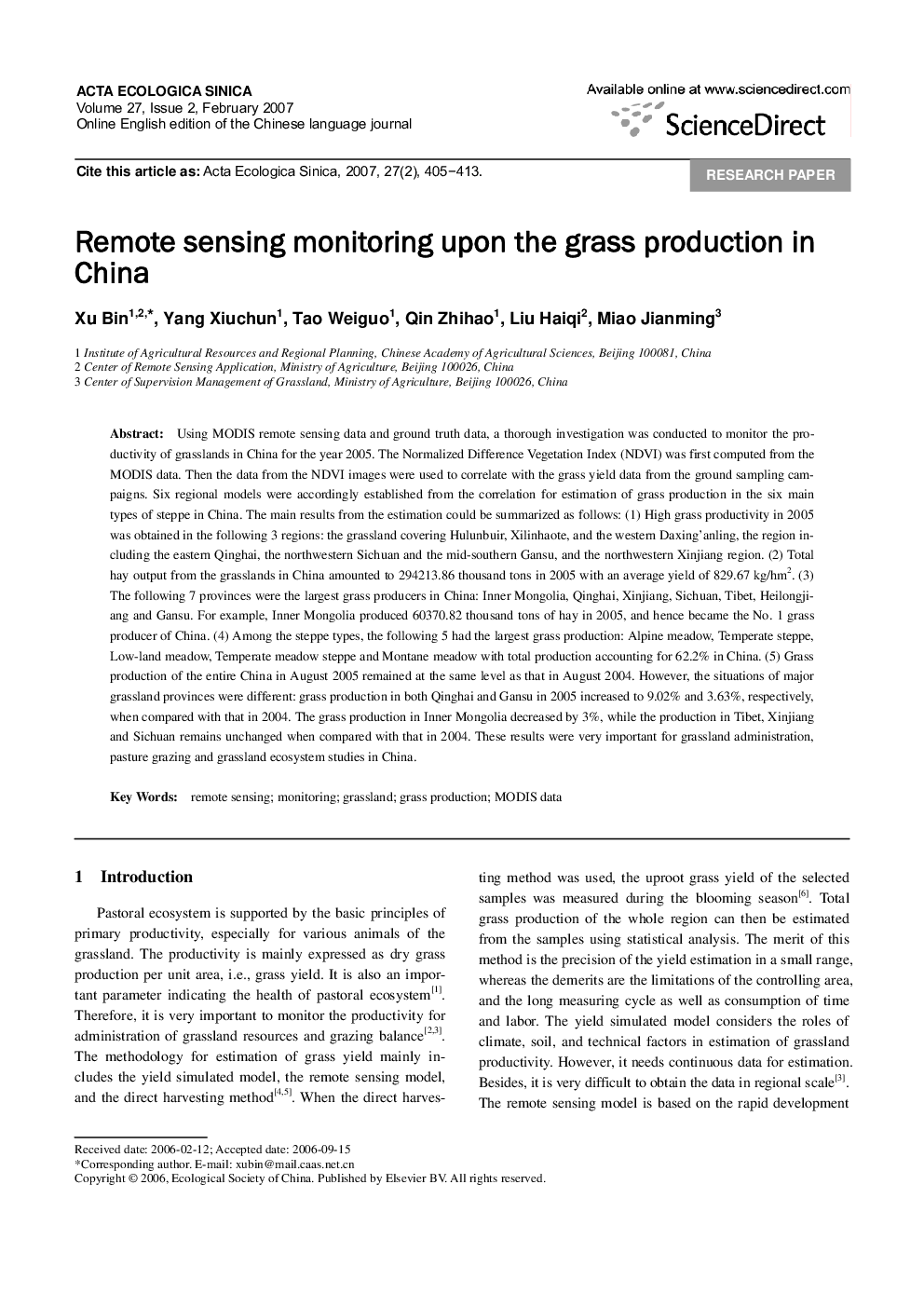| کد مقاله | کد نشریه | سال انتشار | مقاله انگلیسی | نسخه تمام متن |
|---|---|---|---|---|
| 4380562 | 1304012 | 2007 | 9 صفحه PDF | دانلود رایگان |

Using MODIS remote sensing data and ground truth data, a thorough investigation was conducted to monitor the productivity of grasslands in China for the year 2005. The Normalized Difference Vegetation Index (NDVI) was first computed from the MODIS data. Then the data from the NDVI images were used to correlate with the grass yield data from the ground sampling campaigns. Six regional models were accordingly established from the correlation for estimation of grass production in the six main types of steppe in China. The main results from the estimation could be summarized as follows: (1) High grass productivity in 2005 was obtained in the following 3 regions: the grassland covering Hulunbuir, Xilinhaote, and the western Daxing'anling, the region including the eastern Qinghai, the northwestern Sichuan and the mid-southern Gansu, and the northwestern Xinjiang region. (2) Total hay output from the grasslands in China amounted to 294213.86 thousand tons in 2005 with an average yield of 829.67 kg/hm2. (3) The following 7 provinces were the largest grass producers in China: Inner Mongolia, Qinghai, Xinjiang, Sichuan, Tibet, Heilongjiang and Gansu. For example, Inner Mongolia produced 60370.82 thousand tons of hay in 2005, and hence became the No. 1 grass producer of China. (4) Among the steppe types, the following 5 had the largest grass production: Alpine meadow, Temperate steppe, Low-land meadow, Temperate meadow steppe and Montane meadow with total production accounting for 62.2% in China. (5) Grass production of the entire China in August 2005 remained at the same level as that in August 2004. However, the situations of major grassland provinces were different: grass production in both Qinghai and Gansu in 2005 increased to 9.02% and 3.63%, respectively, when compared with that in 2004. The grass production in Inner Mongolia decreased by 3%, while the production in Tibet, Xinjiang and Sichuan remains unchanged when compared with that in 2004. These results were very important for grassland administration, pasture grazing and grassland ecosystem studies in China.
Journal: Acta Ecologica Sinica - Volume 27, Issue 2, February 2007, Pages 405-413